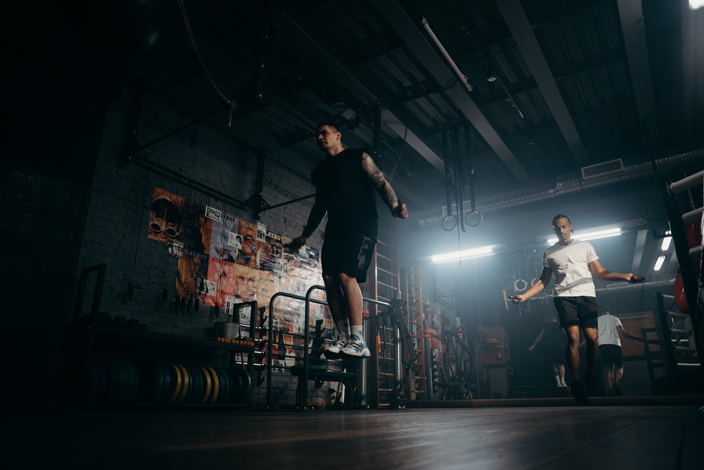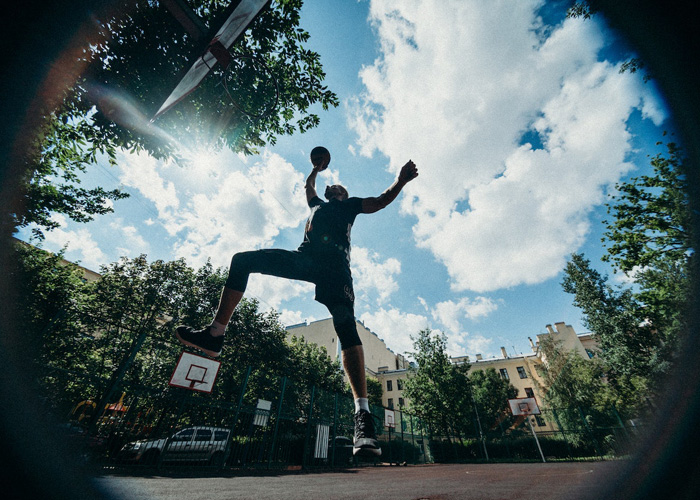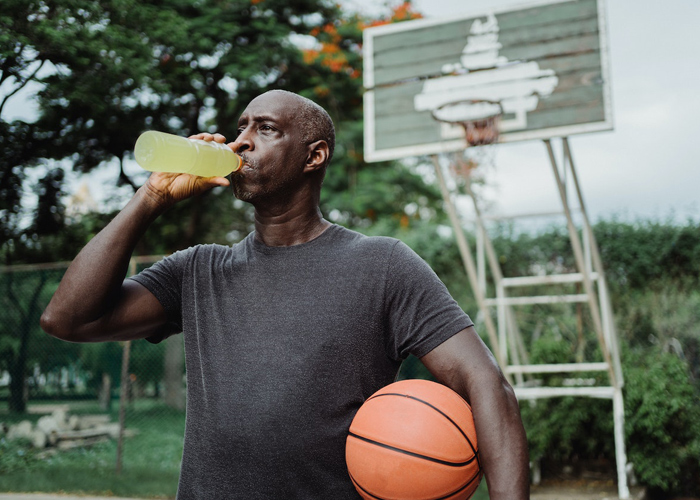Improving Stamina and Endurance Through Regular Basketball Training

Table of Contents
ToggleBasketball is a dynamic and physically demanding sport that requires players to possess excellent stamina and endurance. Whether you’re a professional athlete or a recreational player, enhancing these qualities is crucial for performing at your best on the court. In this article, we will explore various training techniques and strategies to boost your stamina and endurance, enabling you to outlast opponents, maintain peak performance throughout the game, and avoid fatigue-related injuries.
I. Understanding the Importance of Stamina and Endurance in Basketball
Stamina vs. Endurance: Differentiating the two concepts.
Stamina and endurance are often used interchangeably, but they refer to distinct aspects of physical fitness. Stamina generally relates to the ability of an individual to sustain prolonged physical activity or effort without experiencing fatigue. In basketball, stamina is crucial for maintaining a high level of performance throughout the entire game. On the other hand, endurance specifically pertains to the capacity to endure challenging conditions or activities over an extended period. In basketball, endurance is essential for enduring intense training sessions, playing multiple games within a short timeframe, and recovering quickly for subsequent matches.

The significance of stamina and endurance in basketball performance.
Basketball is a fast-paced sport that demands players to move continuously, engage in rapid changes of direction, and execute explosive movements. Improved stamina and endurance directly impact a player’s ability to keep up with the game’s pace, make quick decisions, and execute skills effectively. Players with better stamina and endurance are more likely to outlast opponents during intense moments and maintain their energy levels late in the game, giving their team a competitive edge.
How improved stamina and endurance can enhance overall game efficiency.
Enhanced stamina and endurance translate to increase on-court efficiency for basketball players. When players have better endurance, they can sustain high-intensity efforts for longer periods without sacrificing their performance. They are less prone to mental fatigue, making better decisions during critical moments. Additionally, players with improved stamina can recover faster between plays, allowing them to exert consistent effort throughout the game without tiring quickly.
II. Developing a Solid Foundation: Preparing for Basketball Training
Consultation with a physician: Ensuring you are fit for strenuous physical activity.
Before engaging in any intense training program, it’s crucial to consult with a healthcare professional or sports physician. They can assess your current health status, identify any potential risks, and provide personalized recommendations to prevent injuries and optimize your training.
Setting realistic goals: Establishing achievable milestones for your training journey.
Setting clear and achievable goals is vital for maintaining motivation and tracking progress. Whether it’s increasing your running distance, improving your stamina during practice sessions, or staying consistent with your training schedule, setting measurable goals will help you stay focused and committed to your basketball training program.
Creating a training schedule: Planning your workouts and rest days effectively.
A well-structured training schedule is essential for steady improvement and injury prevention. Balancing intense workouts with adequate rest days allows your body to recover and adapt to the physical demands of basketball training. Design a training plan that incorporates cardiovascular conditioning, strength training, skill development, and rest days to optimize your progress.
Warm-up and cool-down routines: The importance of pre- and post-training rituals.
Proper warm-up and cool-down routines are critical to prepare your body for the physical demands of basketball training and facilitate recovery. Warm-up exercises should focus on increasing blood flow to muscles, loosening joints, and activating key muscle groups. Cool-down routines should involve gentle stretching and exercises to reduce muscle soreness and improve flexibility.
III. Cardiovascular Conditioning: Elevating Your Fitness Levels
Running and Jogging Drills: Incorporating various running techniques to build endurance.
Running and jogging are fundamental cardiovascular exercises that can significantly enhance your stamina and endurance. Incorporate interval training, such as sprinting and jogging intervals, to challenge your cardiovascular system and simulate game-like situations where you need to accelerate and decelerate rapidly.
Skipping Rope Workouts: Improving footwork, agility, and cardiovascular health.
Skipping rope is a highly effective and fun way to boost your cardiovascular fitness while improving your footwork and agility. It helps in building coordination and leg strength, which are essential attributes for basketball players. Mix up skipping techniques, such as single-leg hops and double under, to add variety to your workouts.

Cycling and Swimming: Cross-training activities to enhance cardiovascular conditioning.
Cycling and swimming are excellent low-impact exercises that can complement your basketball training. Cycling helps build leg muscles and cardiovascular endurance, while swimming engages various muscle groups and improves lung capacity. Cross-training with these activities provides a break from high-impact movements while still maintaining your cardiovascular fitness.
IV. High-Intensity Interval Training (HIIT): Maximizing Results
Understanding HIIT and its benefits for basketball players.
HIIT involves short bursts of intense activity followed by periods of rest or lower-intensity activity. This type of training is particularly effective for basketball players because it simulates the stop-and-go nature of the sport. HIIT workouts improve cardiovascular fitness, enhance anaerobic capacity, and promote fat burning, all of which are beneficial for basketball performance.
Sample HIIT workouts for basketball training.
Shuttle Sprints: Set up two cones or markers approximately 20 meters apart. Sprint back and forth between the cones at maximum effort for 30 seconds, followed by 30 seconds of rest. Repeat for several rounds.
Tabata Shooting: Alternate between 20 seconds of intense shooting practice (e.g., jump shots, layups) and 10 seconds of rest. Repeat for four minutes.
Defensive Shuffle: Assume a defensive stance and shuffle laterally from one cone to another. Perform the shuffle for 20 seconds, rest for 10 seconds, and repeat for several rounds.
Combining HIIT with basketball-specific drills.
Integrate basketball-specific drills into your HIIT workouts to enhance skill development while improving your endurance. For example, combine dribbling drills with short bursts of sprints, defensive slides, or defensive footwork exercises to simulate in-game scenarios.

V. Endurance-Building Basketball Drills
Full-Court Sprints: Improving speed and stamina in game-like scenarios.
Full-court sprints are an excellent way to improve speed and endurance while simulating actual game situations. Start at one baseline and sprint to the other end of the court, focusing on maintaining a consistent pace throughout. Rest for a short period and repeat for multiple sets.
Suicides: Enhancing quick acceleration and deceleration skills.
Suicides are a classic basketball drill that involves sprinting to various points on the court and back in a timed sequence. The constant changes in direction help improve your agility, speed, and ability to accelerate and decelerate quickly, making it an effective endurance-building exercise.
Continuous Layup Drills: Focusing on endurance and shooting accuracy.
Set up a layup line with teammates or practice partners. Continuously perform layups while focusing on maintaining proper shooting form and finishing strong. This drill not only enhances your endurance but also improves your shooting skills under fatigue.

Defensive Slides: Strengthening defensive capabilities and lateral movements.
Defensive slides are essential for basketball players as they improve lateral quickness and defensive capabilities. Slide back and forth between two points on the court, focusing on maintaining a low defensive stance and quick change of direction. Perform multiple repetitions to build endurance.
VI. Strength Training for Endurance
Importance of strength training for basketball players.
Strength training is often overlooked in basketball, but it plays a crucial role in enhancing endurance and preventing injuries. Building strength in the lower body, core, and upper body can improve overall stability, balance, and power during gameplay.
Exercises to target specific muscle groups: legs, core, and upper body.
Squats and Lunges: These exercises target the lower body muscles, including quadriceps, hamstrings, and glutes, improving explosiveness and jumping ability.
Planks and Russian Twists: Core exercises like planks and Russian twists strengthen the abdominal muscles and improve stability during movements.
Push-Ups and Pull-Ups: Upper body exercises like push-ups and pull-ups enhance strength in the chest, shoulders, back, and arms, which are essential for shooting, passing, and rebounding.
Designing a basketball-specific strength training program.
Work with a certified strength and conditioning coach to design a basketball-specific strength training program that aligns with your specific goals and needs. The program should include compound exercises, isolation exercises, and plyometric drills to target different muscle groups and enhance overall endurance.
VII. Proper Nutrition for Enhanced Stamina
Understanding the role of nutrition in athletic performance.
Proper nutrition is the fuel that sustains your body during intense basketball training and games. Consuming the right balance of macronutrients (carbohydrates, proteins, and fats) and micronutrients (vitamins and minerals) is crucial for optimizing energy levels, recovery, and overall performance.
Pre-game and post-game meal planning.
Before games, focus on consuming a balanced meal that includes complex carbohydrates (whole grains, fruits, and vegetables) for sustained energy, lean proteins (chicken, fish, tofu) for muscle support, and healthy fats (avocado, nuts, olive oil) for overall health. After games, prioritize post-workout nutrition to replenish glycogen stores and aid muscle recovery, such as a mix of carbohydrates and proteins.
Hydration tips for basketball players.
Staying properly hydrated is essential for maintaining endurance and preventing fatigue during basketball training and games. Drink water consistently throughout the day, and consider sports drinks with electrolytes during intense training sessions or games to replace lost fluids and minerals.

VIII. Rest and Recovery: The Key to Sustainable Endurance
The significance of adequate rest in the training process.
Rest is a crucial component of any training program. It allows your body to recover, repair muscle tissues, and adapt to the stress placed on it during intense workouts. Lack of rest can lead to overtraining, fatigue, and increased risk of injury.
Incorporating recovery techniques: stretching, foam rolling, and massages.
Implement recovery techniques to reduce muscle soreness and improve flexibility. Stretching, foam rolling, and regular massages help release tension and improve circulation, enhancing the recovery process.
Listening to your body: Recognizing signs of overtraining.
Pay attention to your body’s signals and be mindful of signs of overtraining, such as persistent fatigue, decreased performance, frequent injuries, and changes in mood. If you notice these symptoms, take additional rest days, adjust your training intensity, or consult a healthcare professional.
IX. Mental Conditioning: Strengthening the Mind-Body Connection
Developing mental toughness to overcome fatigue.
Endurance training is not solely a physical challenge but also a mental one. Develop mental toughness by setting and achieving realistic goals, maintaining a positive mindset, and pushing through fatigue during training sessions.
Visualization techniques for improved endurance.
Use visualization techniques to mentally rehearse successful performances and build confidence. Imagine yourself displaying unwavering stamina and endurance during critical moments in the game.
Mindfulness and meditation for focus and composure during games.
Practicing mindfulness and meditation can improve focus, concentration, and composure during games. Engaging in mindfulness exercises can help you stay present and calm, even when faced with pressure situations, contributing to improved endurance on the court.

X. Monitoring Progress and Making Adjustments
Keeping track of training sessions, performance, and improvements.
Maintain a training journal or use fitness tracking apps to record your workouts, performance metrics, and personal bests. Regularly review your progress to stay motivated and identify areas that need improvement.
Identifying areas of weakness and adjusting training accordingly.
Analyze your training data to identify weaknesses in your stamina and endurance. Focus on targeting those areas in your training sessions to make steady progress.
Seeking professional guidance: Coaches, trainers, and sports psychologists.
Don’t hesitate to seek professional guidance if you’re serious about improving your stamina and endurance. Coaches and trainers can provide personalized training plans, while sports psychologists can assist in developing mental resilience and maintaining motivation throughout your journey.
Conclusion
Improving stamina and endurance is a continuous journey that requires dedication, hard work, and discipline. By incorporating a well-rounded training program, focusing on cardiovascular conditioning, strength training, proper nutrition, and mental conditioning, basketball players can elevate their game and maintain peak performance throughout the season. Remember, consistency is key, and listening to your body’s needs will contribute to sustainable progress. So, lace up your basketball shoes and embark on the path to becoming a stronger, more enduring athlete on the court. With the right mindset and training regimen, you’ll be unstoppable on the basketball court and achieve your goals both on and off the hardwood.
- Facebook
- Twitter
- Linkedin
- Whatsapp





